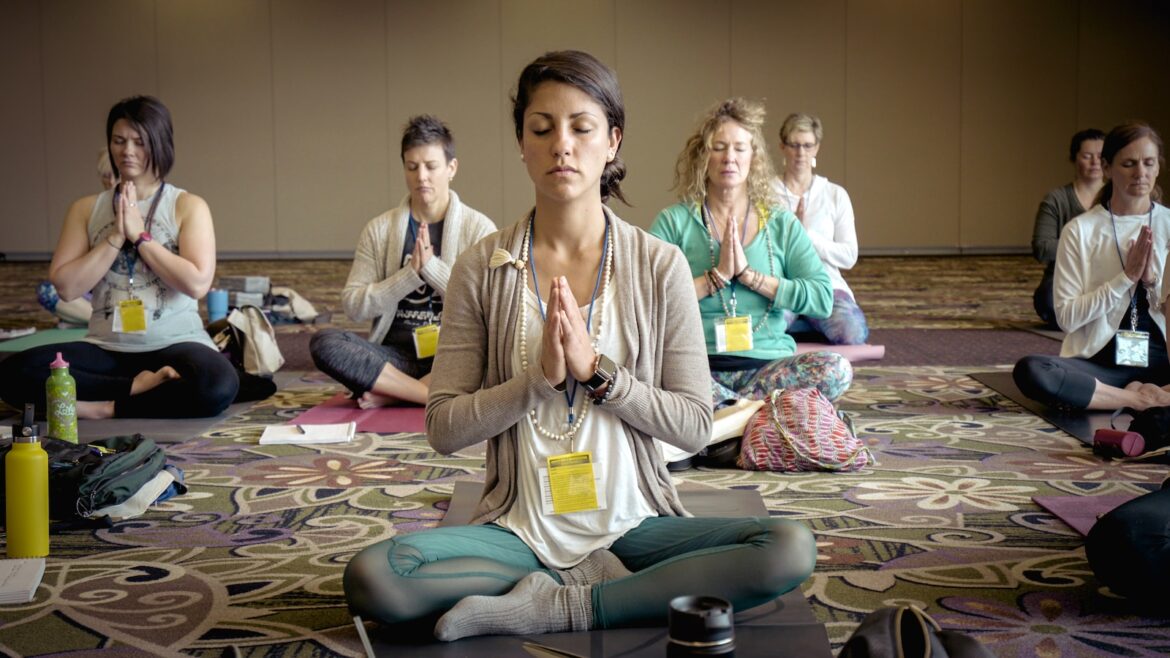Stress Management Mastery: A Guide to a Healthier Life
https://icdrc.org/wp-content/themes/osmosis/images/empty/thumbnail.jpg 150 150 admin admin https://secure.gravatar.com/avatar/693ccb227eb6527287caaa4e9eb13c6e?s=96&d=mm&r=g
Introduction:
In our fast-paced and demanding modern world, stress is an unavoidable aspect of life. Stress can manifest in different ways for individuals, whether it’s the pressures of work or personal responsibilities. Nevertheless, the essential factor for a healthy and fulfilling life is mastering effective stress management. This thorough guide explores the complexities of stress, its effects on both physical and mental well-being, and, most crucially, provides strategies for efficient stress management and reduction.
Understanding Stress:
Stress arises naturally in response to challenging situations, activating the body’s fight-or-flight mechanism. While beneficial in specific scenarios, persistent stress can adversely impact our health. It is essential to identify various stress types—such as acute stress, episodic acute stress, and chronic stress—for successful stress management.
The Impact of Stress on Physical and Mental Health:
1. Physical Health:
Delving into the physiological aspects of stress reveals intricate responses within the human body. One notable facet is the release of stress hormones, including cortisol and adrenaline, triggered during stressful situations. These hormones play a crucial role in the body’s fight-or-flight response, preparing it to confront or evade perceived threats.
Long-term exposure to chronic stress, however, can have profound consequences on various physiological systems. The cardiovascular system, for instance, may bear the brunt of sustained stress, contributing to elevated blood pressure and an increased risk of cardiovascular diseases. The immune function can also be compromised, making the body more susceptible to infections and illnesses. Additionally, chronic stress can impact digestive health, leading to issues such as irritable bowel syndrome (IBS) and other gastrointestinal disorders.
The intricate interplay between stress and chronic health conditions further underscores the importance of stress management. Hypertension, diabetes, and autoimmune disorders are among the conditions linked to prolonged exposure to stress. Understanding and addressing the connection between stress and these chronic ailments becomes pivotal in promoting overall well-being and preventing the escalation of health issues. As such, adopting effective stress management strategies is not merely a matter of mental well-being but emerges as a crucial component in safeguarding physical health over the long term.
2. Mental Health:
A comprehensive exploration of the relationship between stress and mental health disorders unveils a complex interplay that significantly influences an individual’s psychological well-being. Stress, particularly chronic stress, is closely associated with conditions such as anxiety and depression. The persistent activation of the body’s stress response systems can contribute to the development or exacerbation of these mental health challenges.
The impact of chronic stress extends beyond emotional well-being, affecting cognitive functions essential for daily life. Cognitive functions such as memory, concentration, and overall cognitive performance may be adversely affected by prolonged exposure to stress. The intricate mechanisms through which stress influences these cognitive aspects are multifaceted and underscore the importance of addressing stress for the preservation of optimal mental functioning.
Moreover, stress is recognized as a significant factor in both triggering and intensifying existing mental health conditions. The intricate relationship between stress and mental health underscores the need for comprehensive mental health care that includes effective stress management strategies. By understanding and addressing the impact of stress on mental health, individuals can proactively work towards maintaining and promoting their psychological well-being, emphasizing the importance of a holistic approach to mental health care.
Identifying Personal Stressors:
1. Work-related Stress:
Exploring the common stressors prevalent in the workplace sheds light on factors that significantly impact the overall well-being of employees. High workloads, stringent deadlines, and interpersonal conflicts stand out as key contributors to workplace stress. The relentless demands of tasks and projects, coupled with the pressure to meet tight timelines, can create a challenging and tension-filled work environment. Interpersonal conflicts further compound stress, affecting not only individual employees but also the overall dynamics within the workplace.
In response to these stressors, it becomes imperative to implement strategies that foster a healthier work environment. Time management techniques play a pivotal role in helping individuals navigate heavy workloads more efficiently, promoting a balanced and less stressful approach to tasks. Effective communication emerges as another crucial component, facilitating collaboration and mitigating potential conflicts. Open lines of communication allow employees to express concerns, share ideas, and work collectively towards shared goals, contributing to a more positive and supportive workplace culture.
By addressing common stressors through strategic interventions like time management and effective communication, organizations can create an environment that promotes employee well-being, enhances job satisfaction, and ultimately contributes to higher levels of productivity and success. This holistic approach acknowledges the interconnectedness of workplace dynamics and emphasizes the importance of fostering a supportive and conducive atmosphere for optimal professional performance.
2. Relationship Stress:
Effective communication stands out as a cornerstone in building and maintaining healthy interpersonal connections. Clear and open communication facilitates mutual understanding, reduces the likelihood of misunderstandings, and creates an environment where individuals feel heard and validated. This, in turn, alleviates stress associated with unexpressed concerns or unmet expectations.
Resolving conflicts is another crucial aspect of promoting stress-free relationships. Constructively addressing conflicts, whether through open dialogue or mediation, helps prevent the escalation of tension and fosters a more harmonious environment. The ability to navigate disagreements and find common ground contributes to the overall resilience of relationships, reducing the potential sources of stress.
Fostering healthy relationships involves not only addressing challenges but also actively nurturing positive connections. This can be achieved through acts of empathy, support, and appreciation. Taking the time to understand the perspectives of others, offering assistance when needed, and expressing gratitude for shared efforts all contribute to a more positive and supportive relational atmosphere.
3. Financial Stress:
The impact of financial instability on stress levels is profound, with economic concerns often serving as a significant source of anxiety for individuals and families. Uncertainty about one’s financial future, mounting debts, or struggles to make ends meet can contribute to heightened stress, affecting both mental and physical well-being.
In response to these challenges, practical tips for budgeting, saving, and managing financial stress become essential. Establishing a realistic and well-defined budget is a fundamental step toward gaining control over finances. This involves carefully assessing income, prioritizing expenses, and identifying areas where spending can be trimmed.
Saving, even in small increments, provides a financial safety net that can alleviate stress associated with unforeseen expenses or emergencies. Creating an emergency fund can act as a buffer, offering peace of mind and reducing the impact of unexpected financial setbacks.
Effective management of financial stress also involves seeking professional advice if needed. Financial counselors or advisors can provide tailored strategies for debt management, budgeting, and long-term financial planning. Addressing financial challenges proactively can empower individuals to take control of their economic situation and reduce the stress associated with financial uncertainty.
4. Personal Stressors:
Addressing personal challenges, ranging from health issues to life transitions and self-imposed pressures, is crucial for maintaining overall well-being. Health concerns, whether physical or mental, can introduce significant stress into one’s life. Life transitions, such as career changes, relationship shifts, or major relocations, can also be sources of uncertainty and emotional strain. Additionally, self-imposed pressures, often rooted in high expectations or perfectionism, can contribute to heightened stress levels.
To navigate these challenges effectively, developing resilience and coping mechanisms becomes paramount. Resilience involves cultivating the ability to adapt to adversity, bounce back from setbacks, and persevere in the face of challenges. This can be achieved through practices such as mindfulness, building a strong support network, and fostering a positive mindset.
Guidance on developing coping mechanisms is essential for handling life’s uncertainties. This may involve adopting stress-relief techniques such as regular exercise, meditation, or engaging in hobbies that bring joy and relaxation. Seeking support from friends, family, or mental health professionals is another crucial aspect of coping effectively with personal challenges, providing a valuable outlet for expressing concerns and receiving guidance.
Effective Stress Management Strategies:
1. Mindfulness and Meditation:
Mindfulness and meditation offer profound benefits in alleviating stress and promoting overall well-being. These practices involve cultivating a heightened awareness of the present moment, allowing individuals to observe their thoughts and emotions without judgment. By fostering a mindful state, individuals can break the cycle of stress and reactivity, leading to increased emotional resilience and a greater sense of calm.
Incorporating mindfulness practices into daily life can be transformative. Regular mindfulness and meditation have been shown to reduce physiological markers of stress(#stress), such as lowered cortisol levels, while also improving mental clarity and emotional regulation. These practices encourage a more deliberate response to stressors, promoting a sense of control and reducing the negative impact of stress on both the mind and body.
Practical tips for integrating mindfulness into daily life include starting with short, regular sessions, and gradually increasing duration as comfort and familiarity grow. Finding a quiet space, focusing on the breath, and allowing thoughts to come and go without judgment are fundamental aspects of mindfulness practice. Additionally, incorporating mindfulness into routine activities, such as mindful eating or walking, can enhance overall awareness and reduce stress.
Establishing a consistent mindfulness routine, whether through guided meditation, mindfulness apps, or traditional meditation techniques, empowers individuals to proactively manage stress and enhance their overall well-being. The benefits of mindfulness extend beyond moments of meditation, creating a positive ripple effect that contributes to a more balanced and fulfilling daily life.
2. Physical Exercise:
Regular physical activity has been widely recognized for its positive effects on stress reduction, contributing to mental and physical well-being. Engaging in exercise triggers the release of endorphins, often called “feel-good” hormones, which can significantly elevate mood and alleviate stress. Additionally, physical activity provides an opportunity for individuals to channel and release pent-up energy and tension, acting as a natural stress reliever.
Creating a personalized exercise routine that aligns with individual preferences and lifestyles is crucial for long-term adherence and effectiveness. Guidelines for such a routine involve selecting activities that are enjoyable and suit personal preferences, whether it’s running, cycling, dancing, or practicing yoga. Incorporating variety into the routine helps prevent monotony and keeps individuals motivated.
Setting realistic and achievable goals, both short-term and long-term, is essential for maintaining consistency in physical activity. This might involve starting with manageable durations and intensities and gradually progressing as fitness levels improve. Integrating exercise into daily life, such as taking the stairs instead of the elevator or going for a brisk walk during breaks, helps overcome time constraints and makes physical activity more accessible.
3. Healthy Lifestyle Choices:
The significance of nutrition, adequate sleep, and hydration in managing stress cannot be overstated. A well-balanced diet that includes a variety of nutrients is essential for providing the body with the energy and resources it needs to cope with stress. Nutrient-rich foods, such as fruits, vegetables, whole grains, and lean proteins, contribute not only to physical health but also play a crucial role in supporting mental well-being.
Sufficient and quality sleep is a fundamental component of stress management. Sleep is when the body undergoes essential processes for recovery and rejuvenation. Lack of sleep or poor sleep quality can amplify stress levels and compromise both cognitive and emotional resilience. Establishing consistent sleep routines, creating a comfortable sleep environment, and avoiding stimulants before bedtime are practical strategies for promoting restful sleep.
Hydration is another key factor in stress management. Dehydration can contribute to feelings of fatigue and irritability, intensifying the impact of stress on the body and mind. Maintaining adequate hydration levels by regularly consuming water throughout the day supports overall health and helps the body better cope with stressors.
4. Time Management:
Integrating effective time management techniques is essential for prioritizing tasks and alleviating the often overwhelming feelings associated with a busy schedule. Techniques such as the Eisenhower Matrix, where tasks are categorized based on urgency and importance, can aid individuals in focusing on what truly matters. Prioritization enables a more organized and systematic approach to work, preventing a sense of being inundated by tasks.
Setting realistic goals and boundaries plays a pivotal role in achieving a balanced life. Realistic goals ensure that expectations align with available resources, reducing the likelihood of stress associated with unattainable objectives. Moreover, establishing clear boundaries, both in personal and professional spheres, helps in managing workloads and preventing burnout. Knowing when to say no and creating space for personal time contribute to a more harmonious and fulfilling life.
In essence, effective time management, realistic goal-setting, and the establishment of boundaries collectively empower individuals to navigate their responsibilities and aspirations with greater ease. By incorporating these practices into daily routines, individuals can not only enhance productivity but also cultivate a sense of balance, reducing stress and fostering a more sustainable and enjoyable lifestyle.
5. Social Support:
Social connections play a crucial role in mitigating stress, as strong interpersonal relationships provide a valuable support system that can help individuals navigate life’s challenges. Maintaining meaningful connections with friends, family, or a community fosters a sense of belonging and emotional security, reducing feelings of isolation and loneliness often associated with stress.
Building a strong support system involves cultivating open communication and mutual trust with those in one’s social circle. Sharing concerns, joys, and experiences creates a foundation for emotional support, allowing individuals to feel understood and validated. Actively participating in social activities, whether in-person or virtually, strengthens these connections and contributes to a sense of camaraderie.
Seeking help when needed is a crucial aspect of utilizing social connections for stress mitigation. Whether through professional counseling, confiding in friends, or engaging with support groups, acknowledging the importance of external assistance reinforces the idea that one doesn’t have to face challenges alone. A robust support system not only provides emotional encouragement but also offers diverse perspectives and practical advice for coping with stressors.
Conclusion:
In summary, while stress is an inevitable part of life, its effects can be effectively managed through appropriate strategies. By gaining insight into the origins of stress, acknowledging its implications on both physical and mental well-being, and employing practical stress management techniques, individuals can cultivate healthier and more satisfying lives. Emphasizing the importance of self-care, adopting a proactive stance in stress management, and being open to professional assistance are crucial aspects of this journey. It is crucial to recognize that mastering the skills of stress management is an ongoing pursuit toward a more content and harmonious existence. (https://www.who.int//news-room/questions-and-answers/item/stress/?gclid=Cj0KCQiA2eKtBhDcARIsAEGTG4144YkonhnK_x1lh1sT0dpw0UxH3_fQcftPcVSr_J4fZUPUPH9EJ0EaArFeEALw_wcB)




